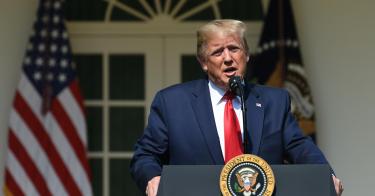The year 1987 was significant in the history of the Senate’s process for considering a president’s nominees. The Senate defeated President Ronald Reagan’s nomination of Robert Bork, and the tactics of his opponents gave rise to the verb “to bork.” Many people, mistakenly it turned out, thought the confirmation process could not get any worse.
Individual confirmation conflicts had increased since Reagan took office. In 1984, Democrats launched the first filibuster in American history against an appeals court nominee. After the second vote to invoke cloture, or end debate, on the nomination of J. Harvie Wilkinson to the U.S. Court of Appeals succeeded, 39 senators voted against confirmation, the highest negative tally to that date.
In 1986, Democrats launched the first-ever filibuster against a district court nominee and then cast a record 42 votes against confirming Sidney Fitzwater. That mark was eclipsed just three months later, when the Senate voted 48-46 to confirm appeals court nominee Daniel Manion and then split 49-49 on a motion to reconsider that confirmation vote.
These conflicts over individual nominees, however, did not disrupt the “regular order” of the confirmation process. Before Reagan took office, the Senate had confirmed nearly 2,300 judges to the federal district, appeals, and supreme courts. Less than 4 percent had any opposition whatsoever. Reagan’s predecessor, President Jimmy Carter, appointed 258 judges in just four years (still a record), and the Senate bothered to take a recorded vote on just five of them.
That pattern continued after Reagan. Over more than two centuries, between presidents George Washington and Bill Clinton, only 3 percent of the judges confirmed to life-tenured courts faced any opposition at all.
>>>View The Heritage Foundation Judicial Tracker
America’s founders expected this. The Constitution they crafted gives the president power to nominate and, with the Senate’s “advice and consent,” to appoint judges. Requiring the Senate’s approval is a check on the president’s appointment power that, Alexander Hamilton wrote, would be a “silent operation” and an “excellent check” to prevent the appointment of “unfit characters.”
So it’s no wonder that the judicial confirmation process worked smoothly for so long. The Senate was indeed silent about the large majority of the president’s nominees, respecting his power to appoint them and stepping in only when individual nominees presented a genuine controversy.
That was then; this is Trump. Since President Donald Trump took office, the regular order of the confirmation process has turned on its head. The percentage of judicial nominees facing opposition – even a single vote – to confirmation has skyrocketed from the traditional 3 percent to more than 70 percent.
More than 40 percent of all Senate votes against confirmed judicial nominees since 1789 have been cast in the last 30 months against Trump nominees. The average Trump nominee has faced 12 times the confirmation opposition as the average nominee of President John F. Kennedy to President Barack Obama. Nearly 40 percent of all votes in American history to filibuster judicial nominees have occurred since Trump took office in January 2017.
This spike in Senate obstruction cannot be explained by any factor relevant to the confirmation process itself. As a recent Heritage Foundation report documented, for example, Trump’s judicial nominees receive comparable or better ratings from the American Bar Association than nominees of previous presidents.
Nor is this revolution simply an example of partisanship. For example, 10 sitting Democratic senators also served during the first few years of the previous Republican president, George W. Bush. The Senate took a similar number of recorded votes during both periods. These 10 Senate Democrats voted against an average of 4 percent of Bush’s judicial nominees but have voted against an average of 48 percent of Trump’s nominees.
This radical transformation results from weaponizing the confirmation process. Those responsible no longer seek to prevent confirmation of an individual nomination here or there. They no longer base their evaluation on the record of the nominees. Today, the “unfit characters” whose appointment Senate Democrats seek to prevent are defined less by the nominees’ own qualifications or merits than by the identity of the president who nominated them.
Back in 1987, a Washington think tank published a book titled The Judges War, examining conflicts over individual nominees. Today, Democrats are corrupting the entire confirmation process by turning it into another front in their war against the president.
This piece originally appeared in The Federalist





